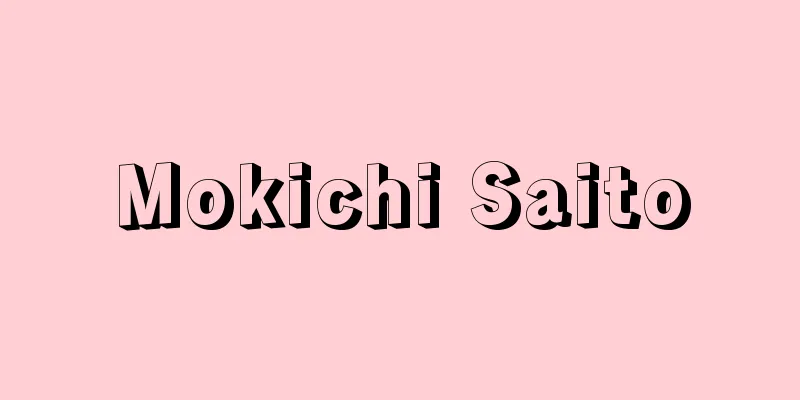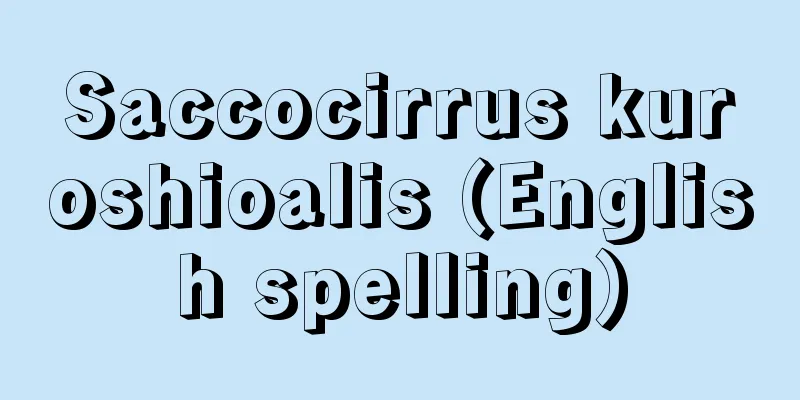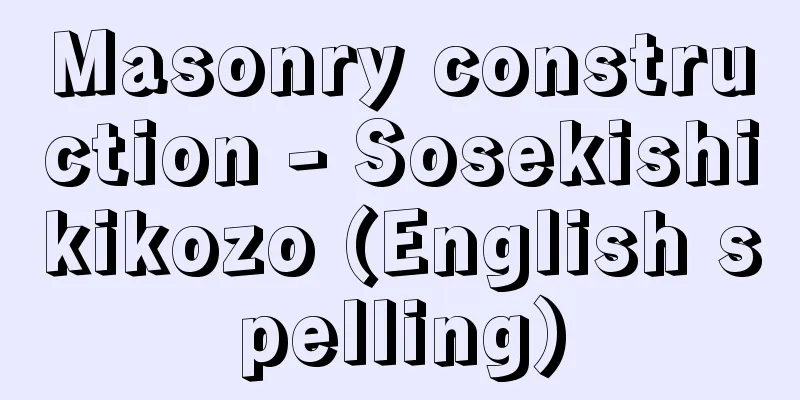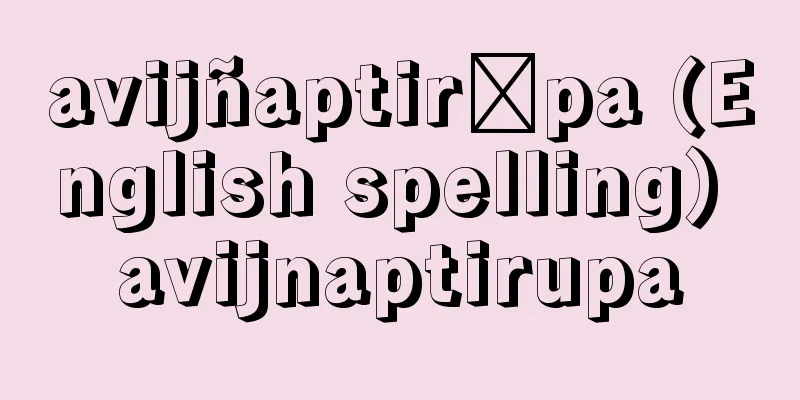Mokichi Saito

|
Poet and doctor. His other name was Doumasanbou Shujin. He was born on May 14, 1882 (July 27 according to the family register) as the third son of Moriya Den'emon in Kanakame, Horita Village, Minamimurayama County, Yamagata Prefecture (present-day Kanakame, Kaminoyama City). His family was a farming family. His neighbor was Hosenji Temple, and he learned calligraphy and Chinese classics from its head priest, Sahara Ryuo. In 1896 (Meiji 29), he graduated from the higher course of Kaminoyama Elementary School, moved to Tokyo, and stayed with Saito Kiichi, who ran a clinic in Asakusa. After attending Kaisei Middle School, he entered the third division of the science department of the former First Higher School in September 1902 (Meiji 35). While attending First Higher School, at the end of 1904, he borrowed and read Masaoka Shiki's "Take no Sato Uta" from a rental bookstore in Kanda, and decided to become a waka poet. He subscribed to the Shiki-affiliated poetry magazine "Ashibi" and submitted his poems to the "Yomiuri Shimbun" while graduating from First Senior High School and entering the Faculty of Medicine at Tokyo Imperial University. Five of his tanka poems were published in "Ashibi" in February 1906, which prompted him to visit Ito Sachio for the first time in March and become his pupil. Sachio compared Mokichi's imaginative tendencies at this time to those of his fellow pupil Taku Horiuchi, commenting that "Horiuchi was a realist, Saito an idealist," but this was a statement that acknowledged Mokichi's unique talent. When "Araragi" was launched in 1908 to replace "Ashibi," Mokichi became its promoter and moved beyond his apprenticeship period. In January 1909, he attended the Kanchoro poetry gathering for the first time. He graduated from university in 2010, majored in psychiatry, and worked at the attached hospital (Sugamo Hospital, Tokyo Prefecture). Prior to this, in July 2005, he was adopted into the Saito family as the son-in-law of Kiichi's second daughter, Teruko (aged 11). After graduating from university, during his time at Sugamo Hospital, Mokichi teamed up with Shimaki Akahiko, Koizumi Chikashi, and Nakamura Kenkichi, as well as Maeda Yugure and Kitahara Hakushu, aiming to bring a new style to his life. This led to a fierce conflict with Sachio, who suddenly passed away in July 1913 (Taisho 2). In the same year, he wrote his masterpieces "Ohiro" and "Shinitamau Haha," and the subsequent collection of poems "Shakkou" (1913), which sang about Sachio's life up until his death, made Mokichi famous. He was also active as a critic at this time, publishing critiques and research that were later included in "Doba Mango" (1919) and "Tanka Shisho" (1916). His second collection of poems, "Aratama" (1921), was written during his time in Sugamo, following "Sakkou" (Red Light), and is a work that deepens his symbolic state of mind, with a consistent feeling of loneliness. In April 1914, he married Teruko. In December 1917, he moved to Nagasaki as a professor at Nagasaki Medical College, where he lived until March 1921. His poetry writing stagnated during this period, but it was also a time when he switched to a more realistic and realistic style. In January 1920, he coughed up blood and recuperated until October. "The sun shines on the lonely moss in the pine forest." A collection of poems from this period includes "Tsuyujimo" (1946), and "Setsu on Shasei no Setsu in Tanka" (1920-21), in which he came to the conclusion that "one should contemplate the reality and portray the life of oneness between nature and self." After this, he continued his medical research in Vienna and Munich for three full years from October 1921, and on his way back, he received news that his foster father's Aoyama Brain Hospital had burned down while at sea, so he returned to his home in the ruins in January 1925. The works he wrote during his study abroad were compiled into the books "Journey" (1947) and "Wanderings" (1948). After returning to Japan, he worked to restore the hospital, and in 1927 (Showa 2) he became its director. "Tomoshibi" (1950) is a collection of tanka from this period. "Returning home, I eat pickled radish on a terrace at dawn, smelling the faint scent of a fire." In 1933, due to an incident in his personal life, he separated from his wife, and Mokichi himself was secretly in love with Nagai Fusako. It was out of this personal anguish that he produced a series of masterpiece tanka collections, including "Shiromomo" (White Peach) (1942), "Gyokou" (Red at Dawn) and "Kanun" (Cold Clouds) (both 1940). During World War II, Mokichi published a great number of war poems to invigorate the fighting spirit, and in 1945 (Showa 20), he evacuated to his hometown of Kinpei, where he lived until the end of the war. Defeat in the war dealt a serious blow to Mokichi, and "Shoen" (1949) is a collection of somber works from that period. In 1946, he moved to Oishida Town in Yamagata Prefecture, where he contracted pleurisy, but after recovering, he found pleasure in walking around the area, including the Mogami River. The works he produced during his two years living in Oishida bore fruit in "Shiroki Yama" (White Mountain) (1949). In November 1947, he returned to his home in Daita, Tokyo, and began the period when he wrote his final collection of poems, Tsukikage (1954). This collection has an ambitious quality that seems to be a return to his earlier work, Akakou, yet at the same time the author's physical and mental weakness meant that he was unable to fully express his intentions, giving the work a strange, chaotic impression. In addition to tanka, Mokichi also made great achievements in the field of prose, including essays such as "Nenjushu" (1930) and "Doumasanbo Yawa" (1944-46), debates such as "Kadan Yashago" (1951), and research on "Kakinomoto no Hitomaro" (1934-40). In 1937, he became a member of the Japan Art Academy, and in 1976, he received the Order of Culture. He died of cardiac asthma at his home in Daikyo-cho, Shinjuku Ward on February 25, 1953. He was given the posthumous posthumous name "Sekkoin Jinyo Yua Kyo Jakusei Koji" (Sekikoin Jinyo Yua Kyo Jakusei Koji). His gravestone in Aoyama Cemetery reads "Mokichi's Grave" in his own handwriting. The Saito Mokichi Memorial Museum is located in Kaminoyama City, where he was born. His eldest son, Shigeta (1916-2006), is known as a psychiatrist, and his second son, Kita Morio, is known as a writer. [Ueda Sanshi] "The Complete Works of Saito Mokichi, 36 volumes (1974-76, Iwanami Shoten)" ▽ "Notes on Saito Mokichi, by Nakano Shigeharu (1964, Chikuma Shobo)" ▽ "Saito Mokichi, by Ueda Sanshichi (1964, Chikuma Shobo)" ▽ "A Discussion on Saito Mokichi, by Motobayashi Katsuo (1971, Kadokawa Shoten)" ▽ "The Life of Saito Mokichi, Volume 1 and 2, by Shibata Minoru (1979, 1981, Shinchosha)" ▽ "Getting to Know Saito Mokichi, by Shibata Minoru (1998, Kasama Shoin)" ▽ "Chronological Life of Saito Mokichi, by Fujioka Takeo (1982, Okisekisha)" ▽ "Saito Mokichi as Seen in Letters, by Fujioka Takeo (2002, Tanka Shimbunsha)" ▽ "Sato Satoro's 'Mokichi's Best Poems'" Volumes 1 and 2 (Iwanami Shinsho) [References] | | | | |Source: Shogakukan Encyclopedia Nipponica About Encyclopedia Nipponica Information | Legend |
|
歌人、医師。別号に童馬山房主人。明治15年5月14日(戸籍面では7月27日)、山形県南村山郡堀田村大字金瓶(かなかめ)(現上山(かみのやま)市金瓶)に守谷(もりや)伝右衛門の三男として生まれる。家は農家。隣家に宝泉寺があり、住職の佐原窿応(りゅうおう)に習字、漢文を習った。1896年(明治29)上山小学校高等科を卒業し、上京して、浅草に医院を営む斎藤紀一方に寄寓(きぐう)、開成中学を経て1902年(明治35)9月旧制一高理科三部に入学した。一高在学中、04年の暮れ、神田の貸本屋で正岡子規(しき)の『竹の里歌』を借りて読み、作歌に志した。子規系の歌誌『馬酔木(あしび)』を購読し、『読売新聞』に投稿しながら一高卒業、東京帝国大学医科大学に進んだ。06年2月『馬酔木』に短歌5首が載り、それを機に3月、初めて伊藤左千夫(さちお)を訪ねて入門した。左千夫は茂吉のこのころの空想的な傾向を同門の堀内卓と対比して「堀内は写実派、斎藤は理想派」と評したが、それは茂吉の特異な才能を認めた発言であった。08年『馬酔木』にかわり『アララギ』が創刊されるに及んで、茂吉はその推進者となり習作期を脱する。09年1月、初めて観潮楼歌会に出席した。10年大学を卒業、精神科を専攻し、付属病院(東京府巣鴨(すがも)病院)に勤務。これより先、05年7月、紀一の次女てる子(11歳)の婿養子として斎藤家に入籍した。 大学卒業後の巣鴨病院時代、茂吉は島木赤彦、古泉千樫(こいずみちかし)、中村憲吉らと組み、また前田夕暮(ゆうぐれ)、北原白秋(はくしゅう)らと交わりながら新風を目ざし、その動揺は左千夫との間に激しい対立を生じるに至るが、1913年(大正2)7月左千夫は急逝する。この年、「おひろ」「死にたまふ母」の大作がなり、続く左千夫の死までを歌った歌集『赤光(しゃっこう)』(1913)は一躍茂吉の名を高からしめた。このころ評論活動もまた盛んで、のち『童馬漫語(どうばまんご)』(1919)や『短歌私鈔(ししょう)』(1916)に収められた評論や研究を発表した。第二歌集『あらたま』(1921)は『赤光』に続くこの巣鴨時代のもので、象徴的な境地を深め、寂寥(せきりょう)の気分が一貫している。14年4月てる子と結婚した。 1917年12月、長崎医学専門学校教授として長崎に移り、21年3月までそこに住んだ。この時期作歌は停滞するが、同時にそれは現実的・写実的な作風への転換の時期でもあった。20年1月喀血(かっけつ)があって、10月まで療養した。「あまつ日は松の木原のひまもりてつひに寂しき蘚苔(こけ)を照せり」。この時期の歌集に『つゆじも』(1946)があり、また『短歌に於(お)ける写生の説』(1920~21)を発表し、「実相に観入して自然・自己一元の生を写す」という規定に至りついた。このあと、21年10月から丸3年間にわたってウィーンおよびミュンヘンにおいて医学研究に従い、帰路、洋上で養父の青山脳病院全焼の知らせを受け、25年1月、焼け跡の自宅に戻った。留学期間の作は『遠遊』(1947)、『遍歴』(1948)にまとめられた。 帰国後病院の復興に努め、1927年(昭和2)院長となる。『ともしび』(1950)はこの時期の歌集である。「かへり来し家にあかつきのちやぶ台に火燄(ほのほ)の香(か)する沢庵(たくあん)を食(は)む」。33年私生活上の事件のため妻と別居、茂吉自身にも永井ふさ子との間に秘められた恋愛があり、そういう人間的苦悩のうちに『白桃(しろもも)』(1942)、『暁紅(ぎょうこう)』『寒雲(かんうん)』(ともに1940)の一連の高峰をなす歌集が生まれた。 第二次世界大戦下、茂吉は戦意高揚の戦争詠を盛んに発表し、1945年(昭和20)郷里金瓶に疎開、そこで終戦を迎えた。戦争の敗北は茂吉に深刻な打撃を与え、『小園(しょうえん)』(1949)はその時期の沈痛な作品を収める。46年山形県大石田町に移り、肋膜(ろくまく)炎にかかり、癒(い)えてからは最上(もがみ)川をはじめ近在の散策に楽しみをみいだした。この大石田在住2年間の作品は『白き山』(1949)に結実した。47年11月東京・代田(だいだ)の自宅に帰り、最終歌集『つきかげ』(1954)の時代が始まるが、この歌集は初期の『赤光』に還(かえ)ったような意欲的なところがあり、しかも作者の心身の衰弱がその意図に応じきれないところがあって、一種混沌(こんとん)とした不思議な印象を与える。 茂吉は短歌のほか『念珠集』(1930)、『童馬山房夜話』(1944~46)などの随筆、『歌壇夜叉(やしゃ)語』(1951)をはじめとする論争、『柿本人麿(かきのもとのひとまろ)』(1934~40)の研究など散文の領域における業績も大きい。1937年芸術院会員、51年文化勲章受章。昭和28年2月25日心臓喘息(ぜんそく)のため新宿区大京町の自宅で死去。戒名は自選により「赤光院仁誉遊阿暁寂清居士(こじ)」。青山墓地の墓碑は自筆の「茂吉之墓」である。生地の上山市に斎藤茂吉記念館がある。長男茂太(しげた)(1916―2006)は精神科医、次男北杜夫(きたもりお)は作家として知られる。 [上田三四二] 『『斎藤茂吉全集』全36巻(1974~76・岩波書店)』▽『中野重治著『斎藤茂吉ノオト』(1964・筑摩書房)』▽『上田三四二著『斎藤茂吉』(1964・筑摩書房)』▽『本林勝夫著『斎藤茂吉論』(1971・角川書店)』▽『柴生田稔著『斎藤茂吉伝』正続(1979、81・新潮社)』▽『柴生田稔著『斎藤茂吉を知る』(1998・笠間書院)』▽『藤岡武雄著『年譜斎藤茂吉伝』(1982・沖積舎)』▽『藤岡武雄著『書簡にみる斎藤茂吉』(2002・短歌新聞社)』▽『佐藤佐太郎著『茂吉秀歌』上下(岩波新書)』 [参照項目] | | | | |出典 小学館 日本大百科全書(ニッポニカ)日本大百科全書(ニッポニカ)について 情報 | 凡例 |
<<: Saito Mototsune Diary - Saito Mototsune Diary
>>: Saito Myouchin - Saito Myouchin
Recommend
Chlorine disinfection
Also called chlorine disinfection. Sterilization u...
Ophelon, S. - Ophelon
...Frank O'Connor (1903-66) dealt with the tr...
Takuhan - Takuhan
A relief printing technique in which paper is plac...
Hyaena hyaena (English spelling) Hyaenahyaena
...The lifespan of a captive hyena has been recor...
yellow daisy
...The representative perennial species are R. la...
Watermelon - Watermelon
A creeping annual plant of the Cucurbitaceae famil...
Criminal Record - Zenka
Having been convicted and sentenced to a crime. T...
Concrete Mixer
…The agitator car used in tunnel construction is ...
Main text - Seibun
〘Noun〙① Formal characters. Standard font. ※Konjaku...
Radding, CM (English spelling) RaddingCM
… [Molecular mechanism of genetic recombination] ...
Svapnavasavadatta (English spelling)
…It can be assumed that these plays were written ...
Notochord
The notochord is a tissue located at the center o...
zweckrational
…The ultimate support of ethos is found within th...
bending test
...Compression tests are also used to test finish...
jambu
…It is also called Senbushiyu. Sanskrit jambudvīp...









